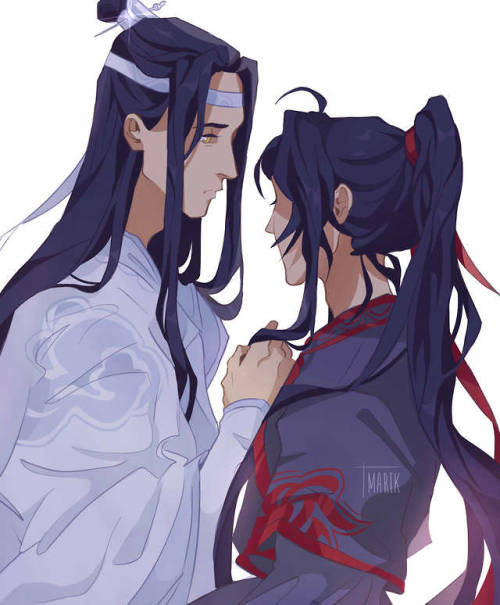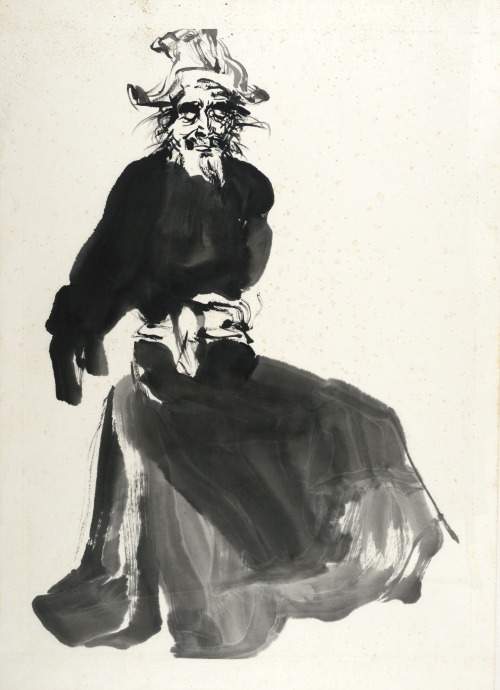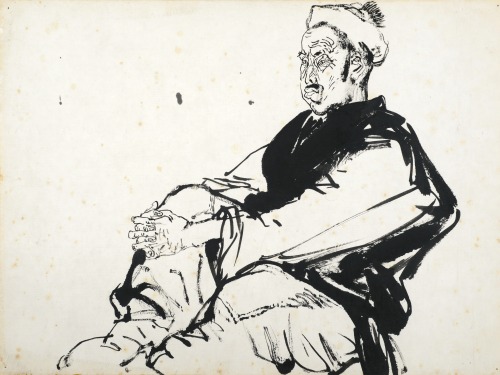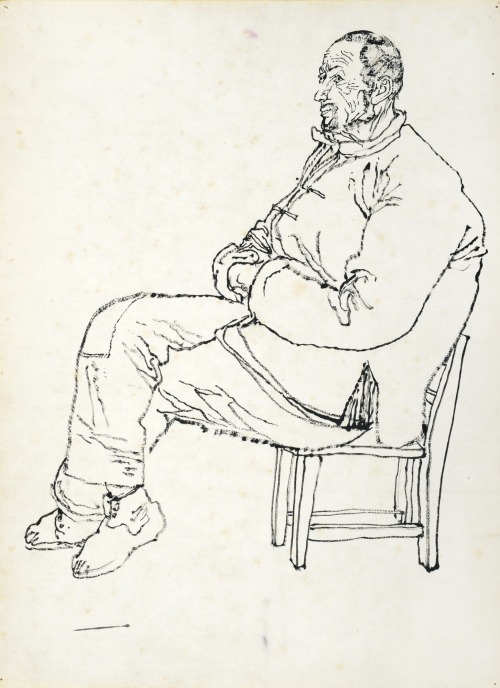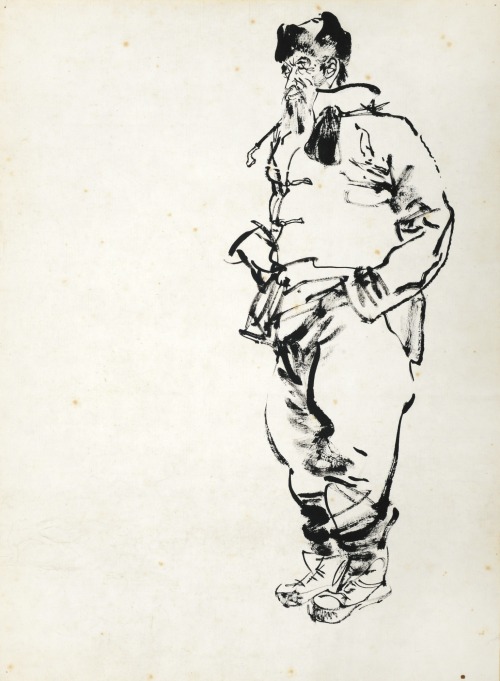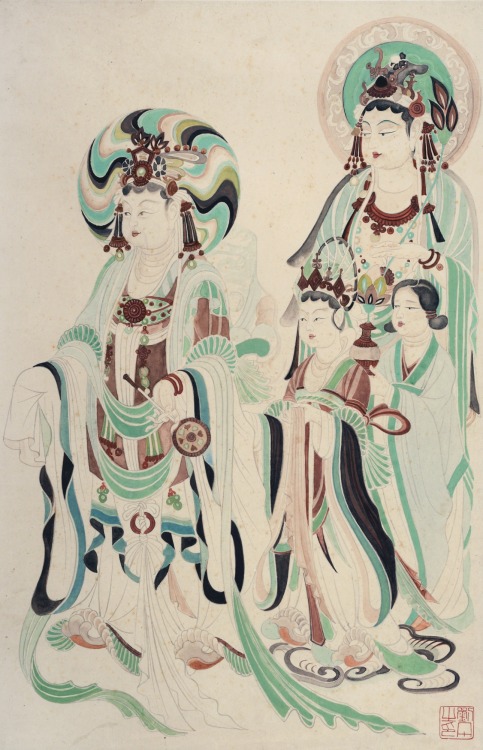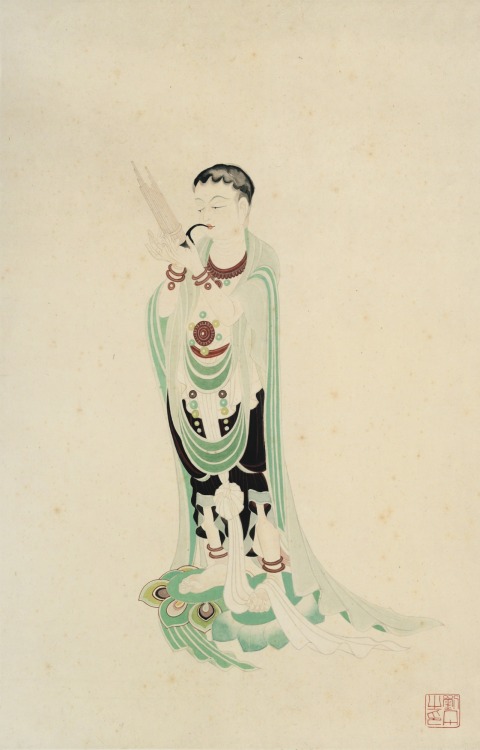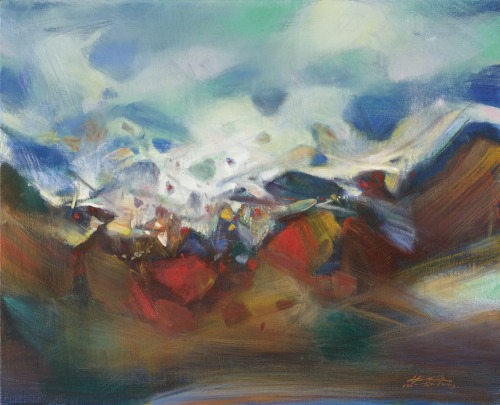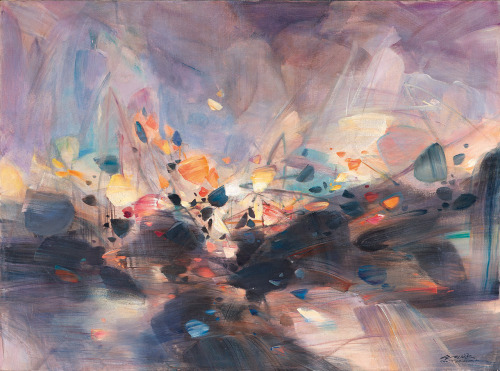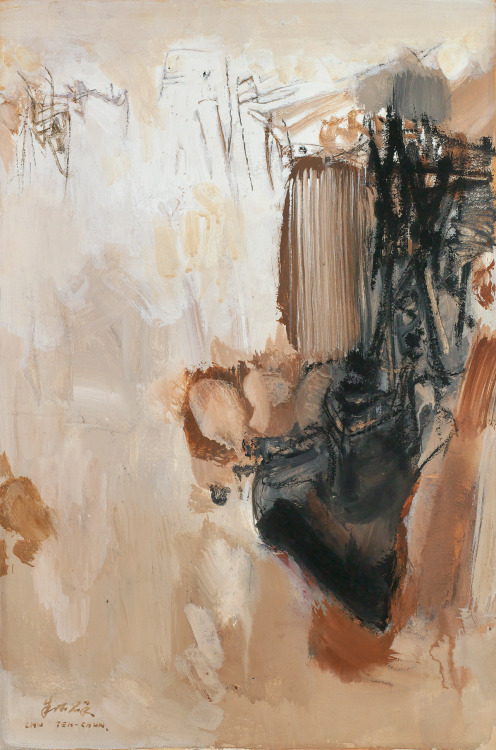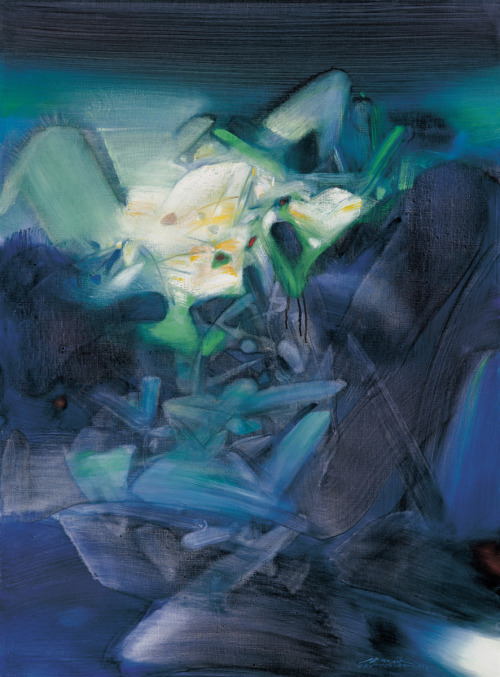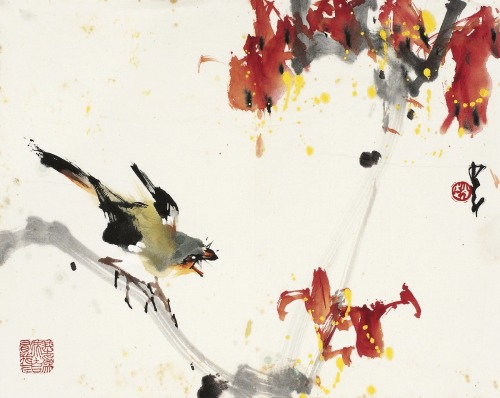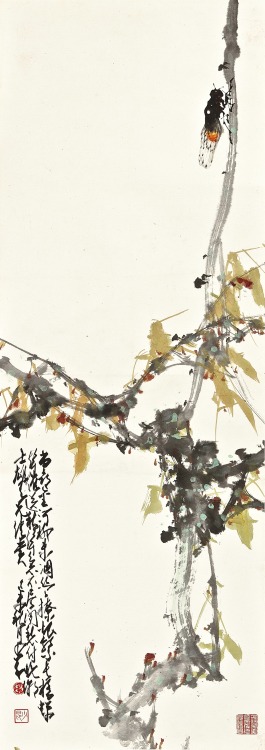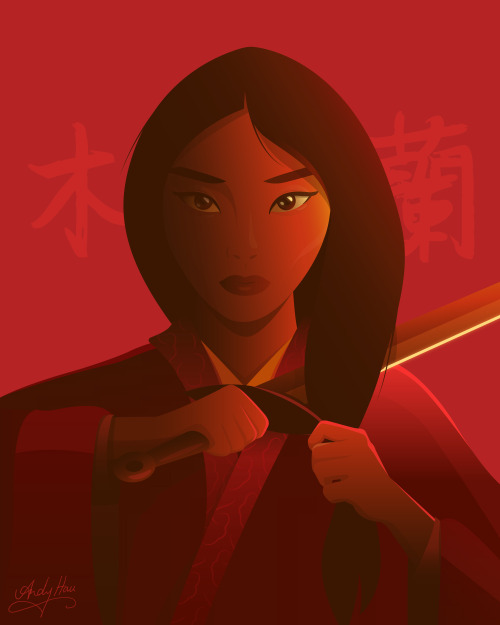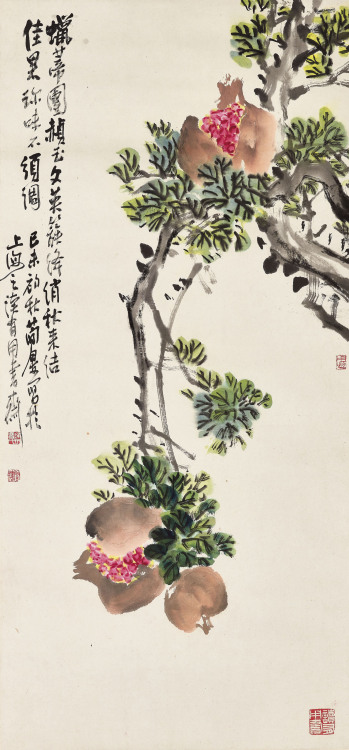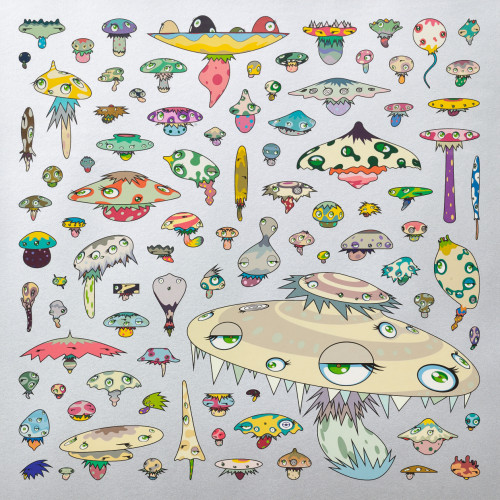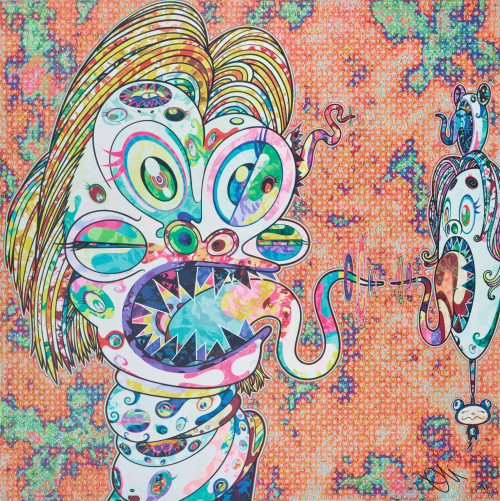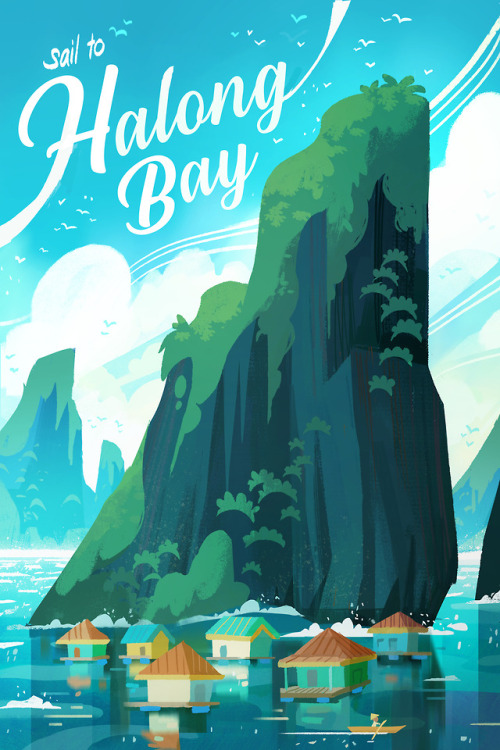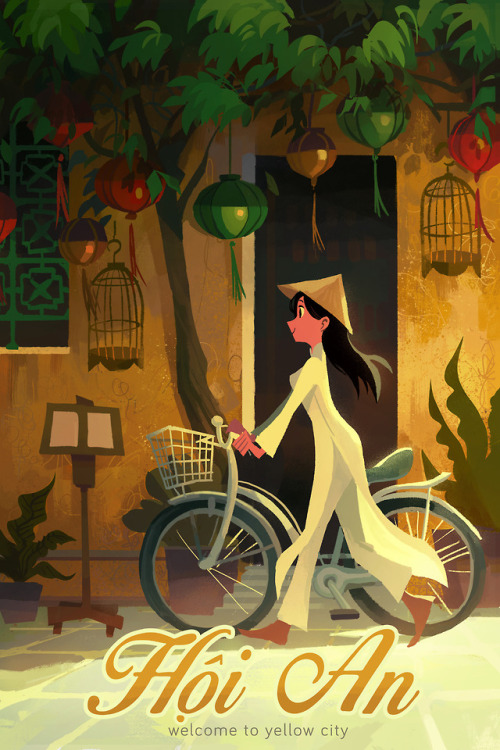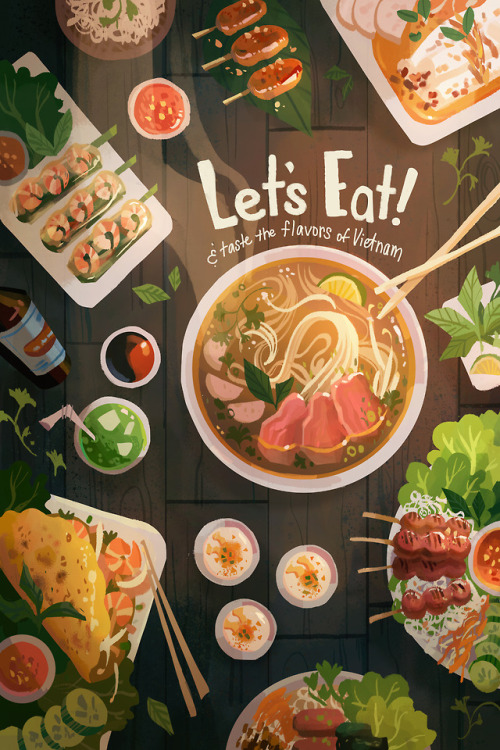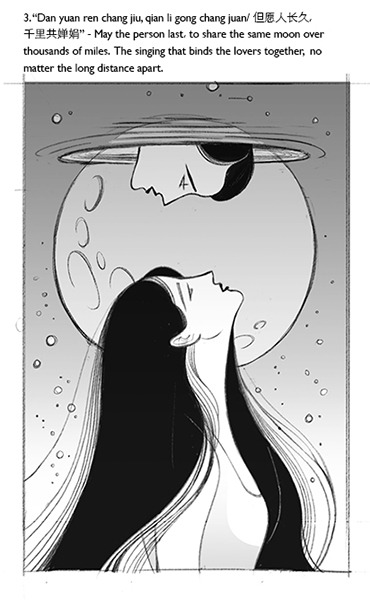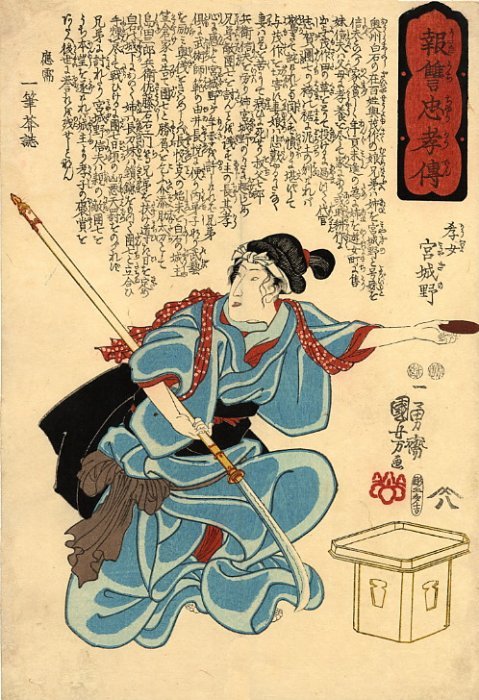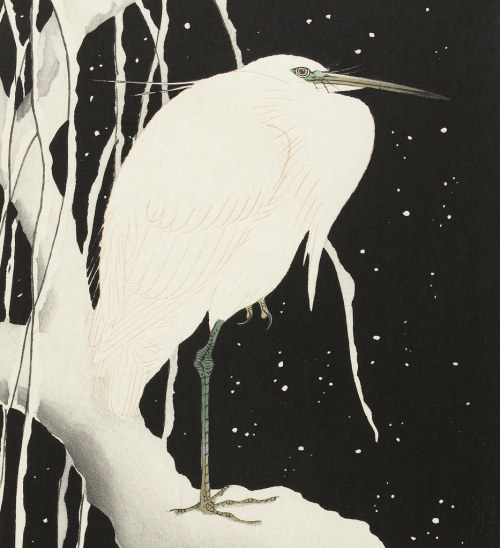#asian art

Rough Sea at Naruto in Awa Province (no. 55 from the series Famous Views of the Sixty-odd Provinces), Hiroshige, 1855
Liu Dan (劉丹, 刘丹) (1953, China)
Ink figure drawings
Liu Dan is a Chinese artist working in a variety of styles, landscape, traditional figurative drawing,literati subjects,flowersandabstractions.
http://www.alexandramunroe.com/why-ink-the-art-of-liu-dan/
Post link
Chu Teh-Chun (朱德群) (1920–2014, China/France)
Abstract expressionist paintings3
Chu Teh-Chun was a Chinese-Frenchabstract painter. Chu and his schoolmates Wu GuanzhongandZao Wou-ki were dubbed the ‘Three Musketeers’ of modernist Chinese artists trained in China and France, and were pivotal in creating a modern style of painting that synthesized both European and Chinese art traditions.
Chu’s style in particular combines brush strokes inspired by Chinese calligraphy and strong elements of European expressionism and tachism movements.
Post link
Zhao Shao'ang (Shaoang, Shao-Ang, 趙少昂) (1905-98, China)
Zhao Shao'ang was a Chinese artist and exemplar of the landscape, and bird-and-flower painting traditions, as well as a noted painter of cicada. His style is that of the Lingnan School, which formed the basis for the modernisation of 20th century Chinese art.
Post link
To celebrate the film’s upcoming release, here’s an illustration I created of Mulan! For those who haven’t seen the original, it’s basically about a girl who disguises herself as a man in order to serve in the Chinese military, thereby protecting her ailing father from being drafted. Much like the eponymous character, there is a dichotomy to the way the story can be read - from a Western perspective, it’s about breaking free of society’s expectations, from an Eastern perspective, it’s about fulfilling one’s filial duty to your family and community.
Much has been written about the westernisation of the original 1998 animation. I’m glad Disney decided to be more faithful to the original folktale in the new film but strangely there were elements in the original that spoke to those of us in the Asian diaspora (particularly those of us growing up in the West). Caught in a cultural tug of war, we understood the confusion of not feeling we belonged on either side of the divide, as well as the need to moderate ourselves in order to fit in. We also understood the idea of balancing individualism, one of the bedrocks of western culture, with the idea of eastern filial piety.
The hair-cutting scene, which (understandably) doesn’t appear in the new film, was particularly symbolic. In order to fulfil her filial duties, Mulan must go against her parent’s wishes (all the more poignant when you consider hair cutting was seen a mark of great disrespect to your parents in Ancient China). Asians who grew up in the West understand this paradox innately - in order for us to obey our parents, namely by becoming independent, by making a better life for ourselves than the one our parents grew up in and to navigate our way in the world and be counted as an equal in the western world, some of the cultural traditions, rightly or wrongly, must be severed in order for us to forge ahead.
The reviews for the new Mulan have been glowing so far and I can’t wait to learn more about how it’s been updated!
www.andyhau.com
Post link

Broken Web by Lori M. Lee was kind of great, thanks in no small part to the wonderful villain of the story. After all, who doesn’t love villains who parallel their heroes? Who doesn’t love a tragic backstory? And a little light murder?
Book 2 ended on such a cliffhanger, the wait for book 3 will actually kill me

Ning from A Magic Steeped in Poison by Judy I. Lin Have I mentioned how much I love the magic system?? Ning’s magic in particular is super fun and I’m so excited for book 2!

A fake book embossing design I made for Judy I. Lin’s fantastic book, A Magic Steeped in Poison! I couldn’t pick between this and another concept that I wanted to paint, so I decided to have my cake and eat it by turning this into a gold emboss design instead ✨
Pomegranate, Cao Jianlou, 1979
Ink and colour on paper scroll
95.6 x 44.8 cm (37 ⅝ x 17 ⅝ in.)
Post link
Lake at Hakone from the Thirty-Six Views of Mt. Fuji series, Hiroshige, 19th century
Woodblock print
33.5 x 21.5 cm (13.19 x 8.46 in.)
Post link
Homage to Francis Bacon (Study for Head of Isabel Rawsthorne and George Dyer), Takashi Murakami, 2016
Offset lithograph
Each: 50 x 50 cm (19 ⅝ x 19 ⅝ in.)
Post link
Lake Suwa in Shinano Province from the Thirty-Six Views of Mt. Fuji series, Hiroshige, 19th century
Woodblock print
33.5 x 21.5 cm (13.19 x 8.46 in.)
Post link
I recently did a series of travel posters centered around the motherland, Vietnam. I have them up for sale too for anyone who interested in grabbing a print: https://www.inprnt.com/gallery/thetiffopotamus/
Post link
Dan Yuan Ren Chang Jiu
Victo Ngai
但願人長久,千里共嬋娟。Art for a bittersweet space-war girls love short story by JY Yang.
Many thanks to Tor.com and AD Irene Gallo, always a pleasure.
Post link
“Miyagino the filial”, (1847/1848 ?), Utagawa Kuniyoshi (1797-1861)
Print from the series “Stories of dutifulness and loyalty in revenge”.
Depicts one of the two sisters who avenged their father during the 17th century. Their story inspired the kabuki play “Go Taiheiki shiraishi banashi” for instance.
Here the older sister, Miyagino, is represented carrying both a naginata and a sake cup.
Post link
The watercolor painting process for this painting I did in my sketchbook earlier this year. I was definitelyyyy inspired by the Demon Slayer vibe/aesthetic at the time because the new season had just come out, I even went as far as imagining this guy as a character in the series! Ever since, it’s got me thinking of and wanting to make my own characters and stories, just like I used to do all the time as a kid!
‘love u’ by korou
#brbchasingdreams
prints|tutorials
One of my art goals this is year is to learn and practice more. I hardly and rarely draw guys, so it’s something I want to improve on and get better at. So hopefully with lots of practice and dedication, by the end of the year I’ll be able to see a lotta improvement, and maybe even master drawing guys!
#brbchasingdreams
prints|tutorials
Post link
‘Inhale, Exhale’ drops as a print Thurs Nov 25th, 12PM (PT) on my store!
I once asked my friend, “how would you describe my work?” And she responded with “your work is like…. inhale, exhale, yknow?” It was a strange and vague response, but I kinda understood what she meant, and it made me happy. That conversation planted a seed in my mind that one day came into fruition as this very painting.
To this day, this painting still holds such a dear place in my heart. It remains one of my most proudest and memorable pieces to me personally. I think it encapsulated the message, theme and story of my ‘Breathe’ exhibition, but more importantly, it captured everything I’d wanted my work to look and feel like, I felt it was a huge milestone for me! I was proud of how it told a story, how it captured a fleeting moment, how it portrayed a feeling and ultimately; how it captured ‘inhale, exhale’.
Post link
The painting process for my #SailorMoonRedraw challenge piece I did!
HAPPY NEW YEAR!
Happy New Year, indeed!
http://unityinplurality.blogspot.com/
May 2020 unfold with clarity!
Post link

Chinese paintings from Qing Dynasty (1644-1912) of some ancient “beauties” in their daily lives.

Woman Playing With Cat from the Shin bijin (True beauties) series | Yōshū (Toyohara) Chikanobu 洲周延 - 1900-1905

Fukiya Kouji (1898-1979)

Yin is dark, cold, receptive, magnetic.
Yang is light, hot, giving, active.
Both are present in everything. Day is Yang, Night is Yin. But during a Yang day, one will have periods of Yin rest.
Yin-Yang is also an important concept in Japanese art. In the calligraphy above, outward brush-strokes are Yang and should be painted freely. Inward brush-strokes are Yin, and should be painted tightly.
Even in as mundane an activity as cooking, one finds Yin-Yang. In Japanese cooking, there are Yang knives which are used blade-outwards, and Yin knives which are used blade-inwards. Yin-Yang also applies to the ingredients. The leaves of a plant are Yin, but the roots of a plant are Yang. As with everything, a good balance is necessary.
In the image above I intended to make the “yang” round like the sun. It also resembles an “enso”, a hand-drawn circle which in Buddhism signifies the circle of life.

不 = not
言 = speaking
実 = actually
行 = doing
An interview with Jacqueline Lin
Footage of an asian girl’s eyes slowly engorging plays alongside a female narrator explaining and defending her desire to undergo Blepharoplasty (eye surgery). The narrator is matter of fact about the issues surrounding having Epicanthic fold eyelids, and explains with a clarity the logic behind her desire. It’s the only voice of the 5 in Record Recreate which isn’t drenched in apology or self-deprecation. But even that voice, like the others, recognizes a distance between self-perception and the body. Girls talk about their physical features and future selves with the same kind of language of desire one might use to talk about wanting an upgraded version of your old iPhone. An attitude of being able to pick, choose and upgrade, to question the quality of characteristics about yourself and be open to the pursuit of something, if not better, then different. This attitude towards identity reappears frequently in Jacqueline Lin’s work. Everywhere from the sacrosanct image of the buddha dissolving into cut-up pieces of itself in Machina Buddha, to the ‘Choose your own adventure’ style of Oriental Battle, to the changing traditional Chinese Opera makeup masks in Bian Lian. Identity, costume and desire are intertwined, with the body as the ultimate canvas for a fluid social negotiation of the self. The subject of Lin’s videos demand us to ask questions about ideals and quest for self-satisfaction, as well as provoking us to stop and consider where the logic of these superficial pursuits originate. We decided to turn the camera around, and ask these questions of the lady behind the lens.
What is your background and how has it influenced the way you see the world?
I spent my childhood growing up in Jeddah and Cairo, and then moved to Taiwan in 8th grade and went to high school there. Living in these different countries made it a little difficult for me to really find my own identity. I never thought I could completely relate to my friends from the Middle East because of social and lingual barriers, and when I went back to Taiwan I found that I didn’t truly understand the Taiwanese culture either because I attended an International school where we were taught in English, and influenced by Western culture. However, I never thought about this as something negative and I feel so blessed to have been able to learn from the Islamic, Chinese and Western culture. I think of myself as a mix of all these influences that have turned me into who I am today. Having experienced ethnically being in both the minority and the majority, I feel more culturally aware and appreciative of everyone’s views.
Though you work in a variety of mediums, video seems to be your go-to. What was your first experience with video? What do you feel is the future potential of the moving image?
I used to create short movies and ask my sisters to act for me - the movies were really silly though! I was around 12 when I directed my first video about this ballerina who hates going to ballet class and accidentally knocks over her teacher while pirouetting…seemed funny at the time! But what hooked me in was being able to immediately cut and edit within video camcorder – I would storyboard my shots to make sure I knew what to film first and last, and plan when to cut into close-ups of the characters or their actions. Nowadays video comes in all forms and is so easily accessible. I am always recording videos on my phone of things I come across that I find visually captivating – whether it’s the people, the shadows cast on walls, or the patterns created by reflections. I think that moving images don’t have to always be viewed on a screen, and I am more interested in video in other forms such as projected onto surfaces, or how video can change environments that we live in.
One of the primary focuses in your work is the character of an asian girl. Is there something specific you are trying to communicate? What kind of a portrait are you trying to paint?
I find myself returning back to this character of an Asian girl all the time because I draw my inspiration from my experiences of being one. I am constantly thinking about the social norms of being an Asian female specifically and how often they become categorized as one idea when really, each Asian female has her own identity that is completely unique. There are many assumptions about Asian females because of popular media that has given a lot of Westerners certain ideas about us. I am both poking fun at these categorizations because I completely disagree with them, and am exploring ways in which Asian girls identify themselves.
Outside of the asian girl, I also feel like you are constructing an entire body of work based off of a language of personal symbolism- hair buns, masks, nostalgic Chinese music… what do these ideas mean to you when you incorporated them into your works?
The symbolism comes from my curiosity to know more about Asian practices - the traditional Chinese performances or instruments like the Gu-Zheng and learn more about them because I myself am not entirely familiar with it. And honestly, the symbolism I incorporate in my works come from what I am obsessed with at the time of making those projects. For instance, the hair buns came from seeing some friends at RISD do their hair up that way – and I loved the way they looked so decided to create a character inspired by them!
You are now a senior in college, what was the worst moment in your college experience and how did you overcome it? What was your best experience?
If I had to pick out something I didn’t enjoy these past three years it would probably be times when I am assigned a project to work on and can’t generate any ideas for it. I dislike jumping into an idea that I am not happy about and creating something I don’t feel is very me. Sometimes it doesn’t work out and I am not proud of my work, and sometimes it surprises me because a project might take on a different direction and turn out great! My best experience is being able to work with others, collaborating with them, and asking them to be part of my projects. In art school, I am constantly surrounded by people I can share my work with and in turn see their work too. We are always giving each other feedback and sharing our love for art, and that is what I am truly enjoying the most about being here.
An interview with Taiwanese-American video artist, Jacqueline Lin, by Vivian Loh and Jessia Ma.
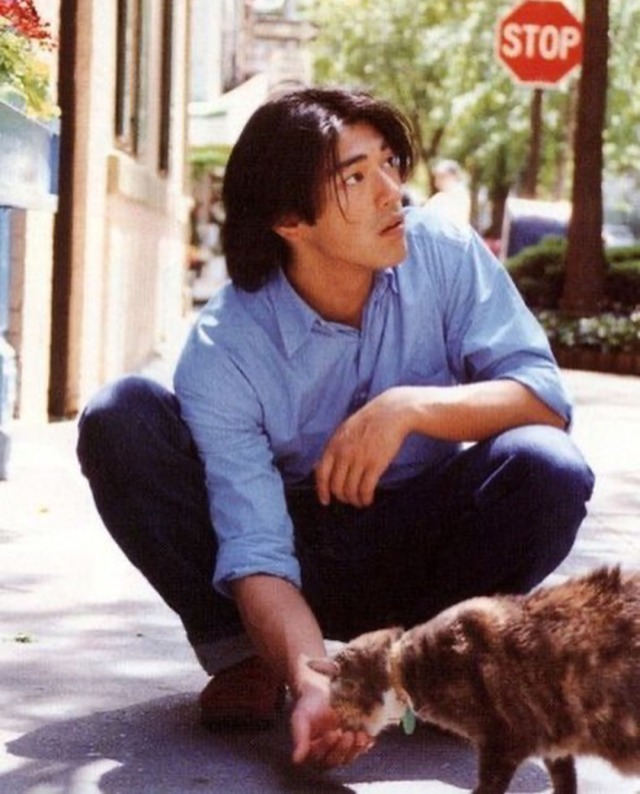






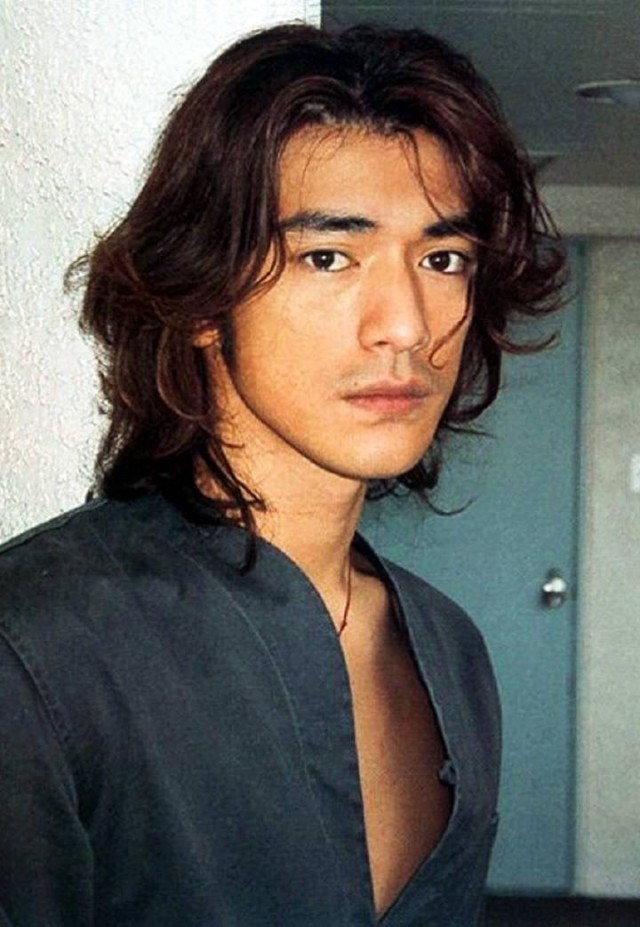


Oops, I did it again - A Takeshi Kaneshiro simp post!

